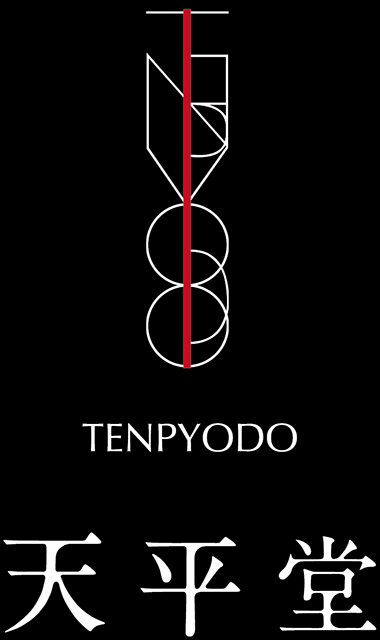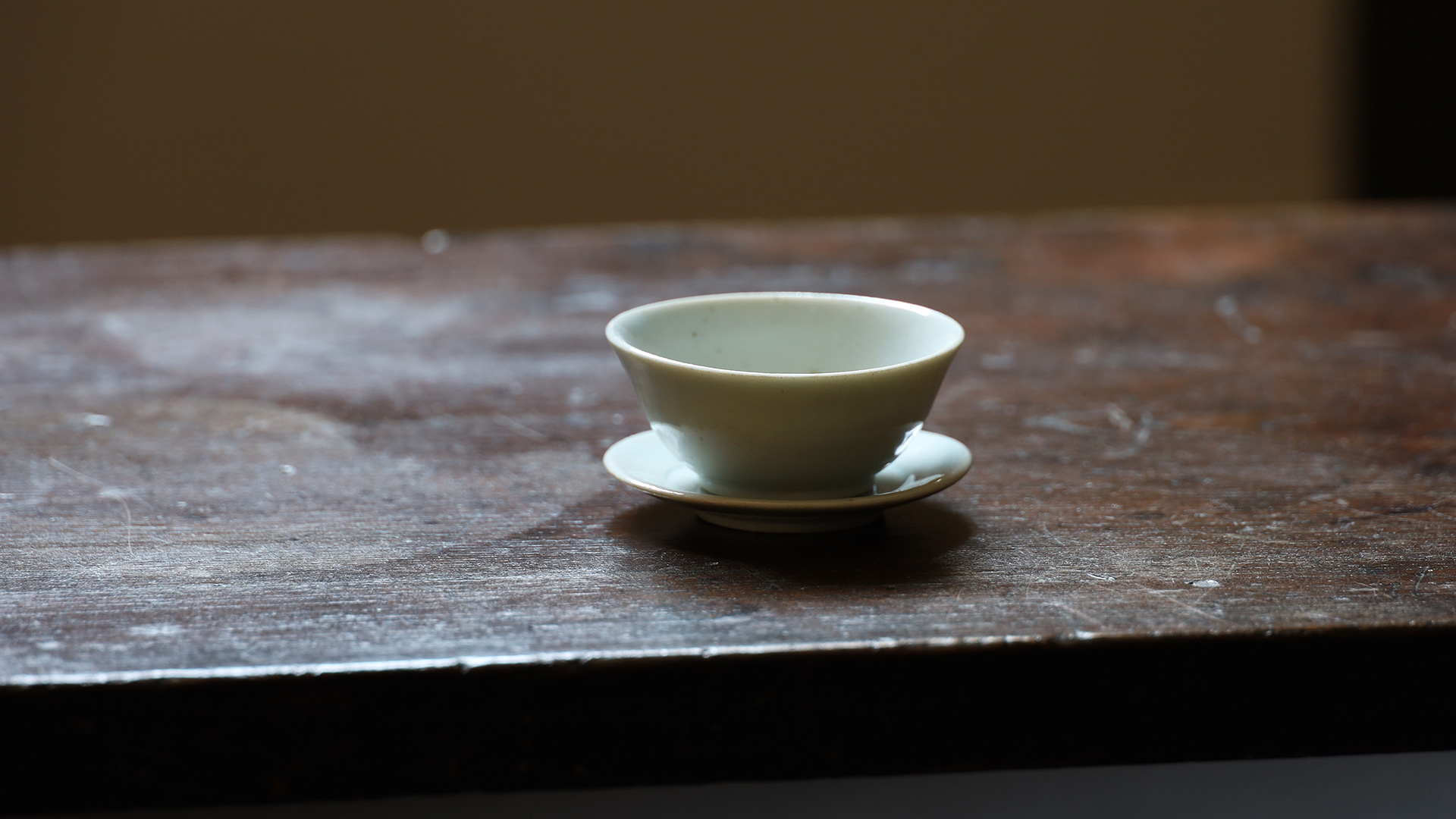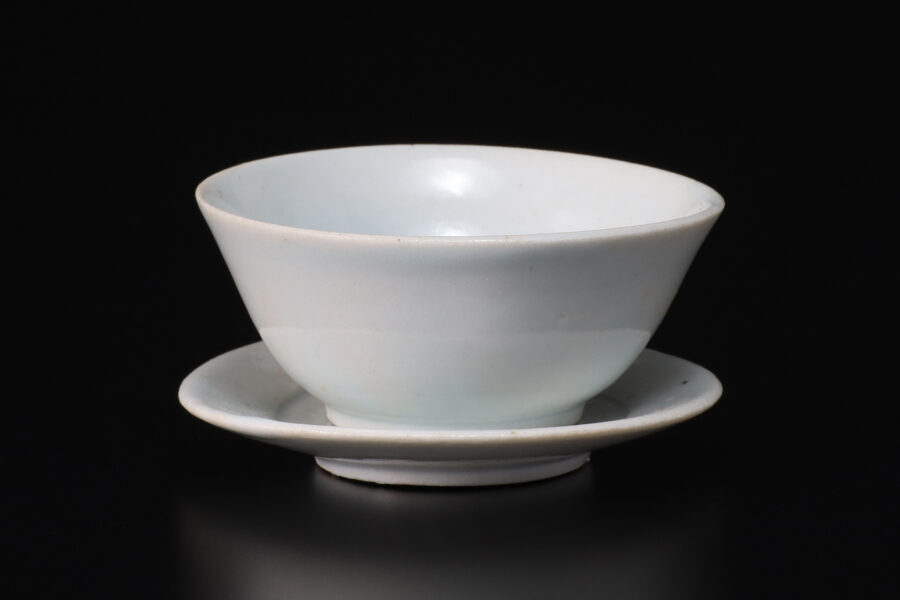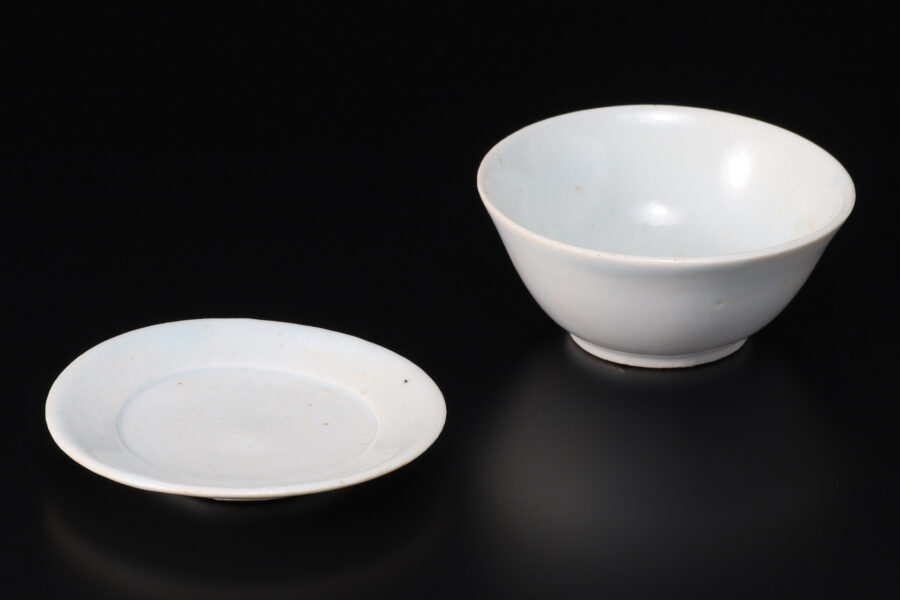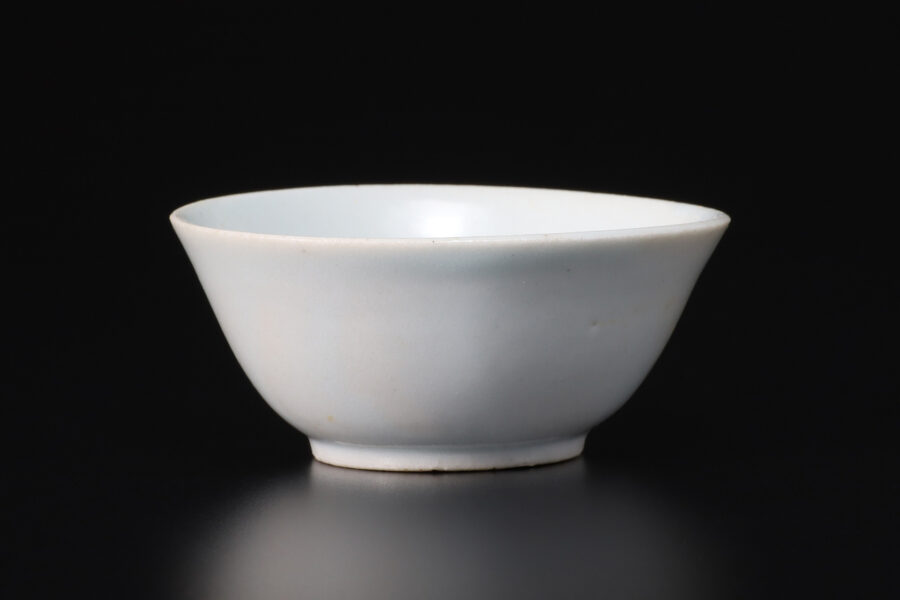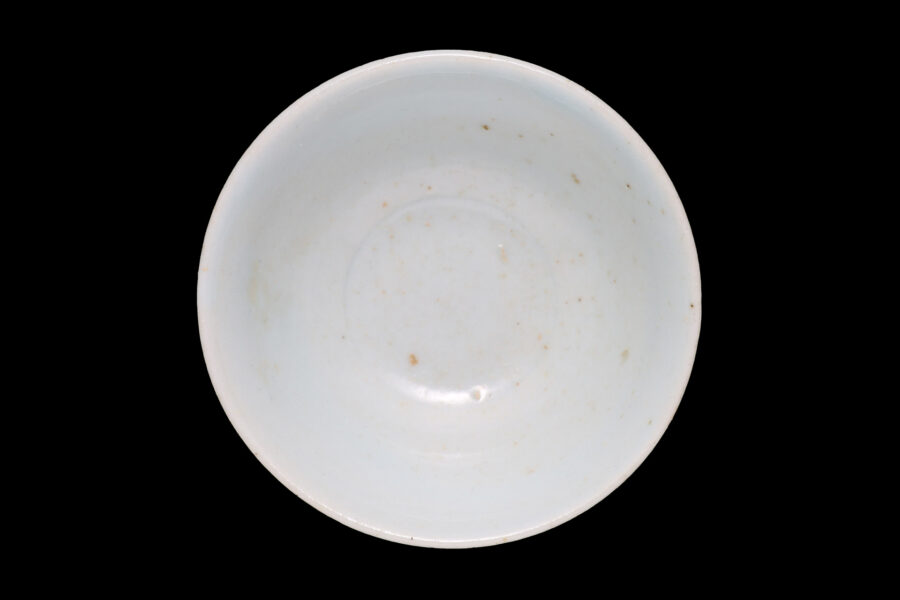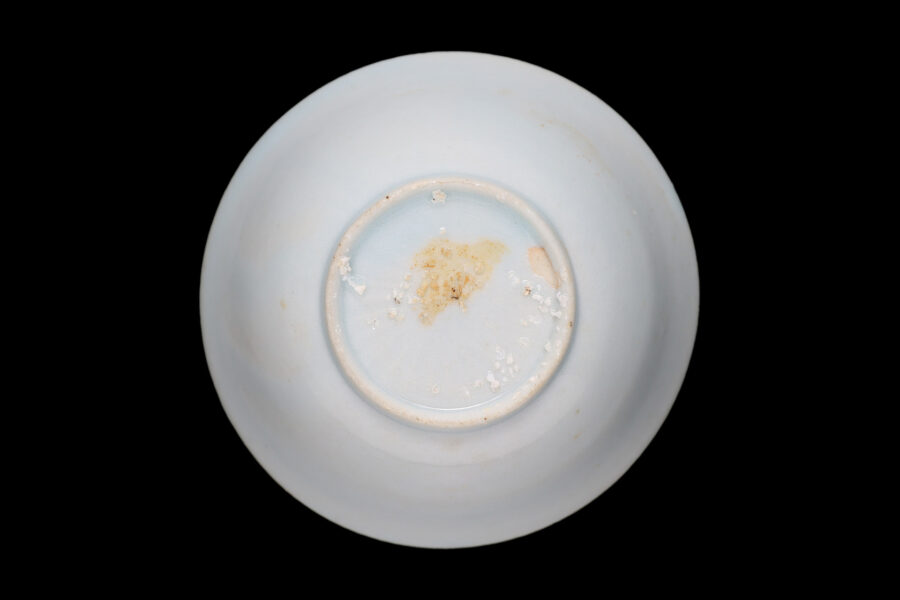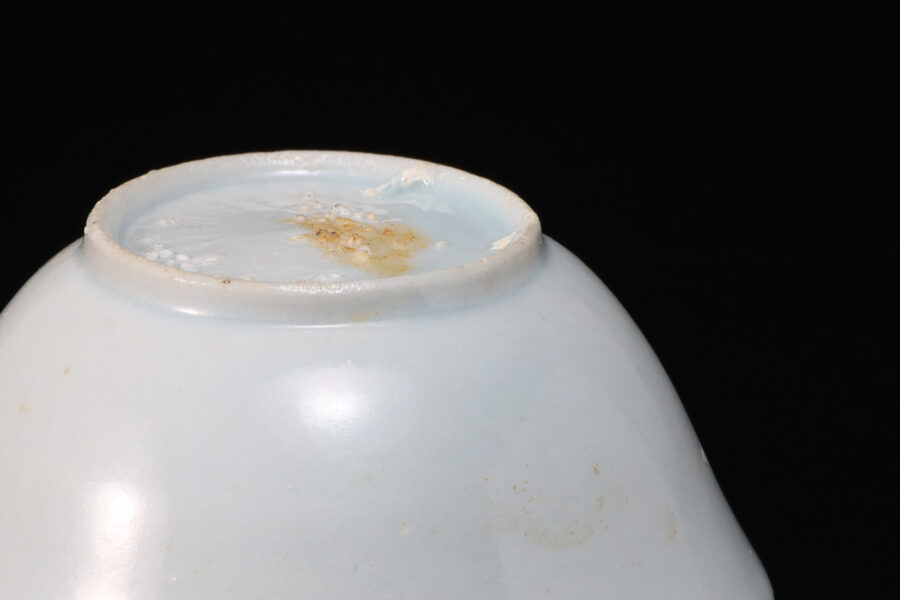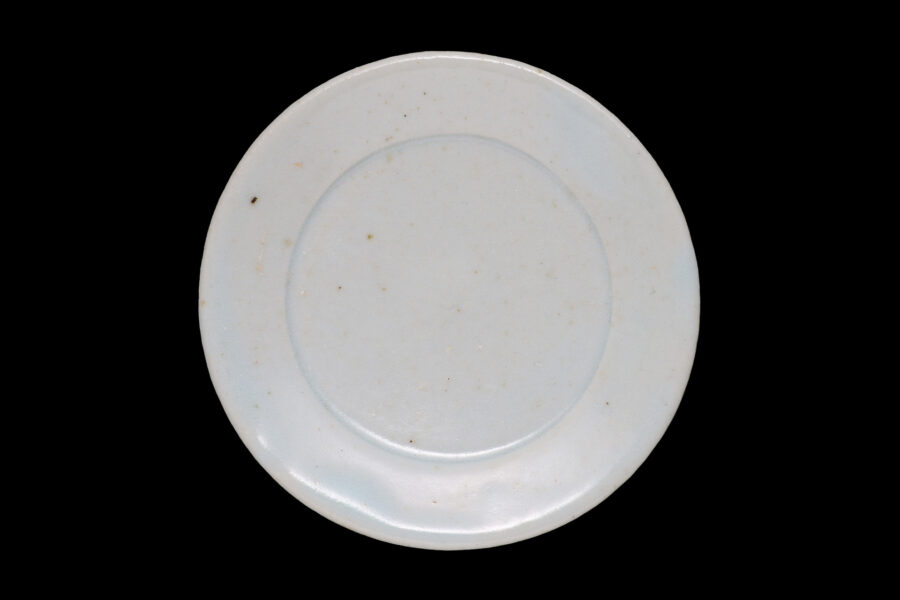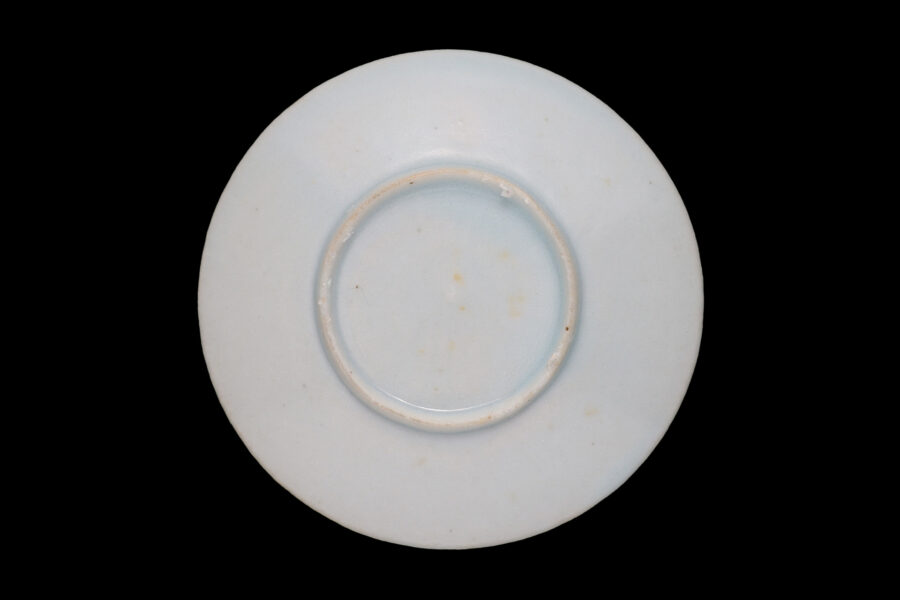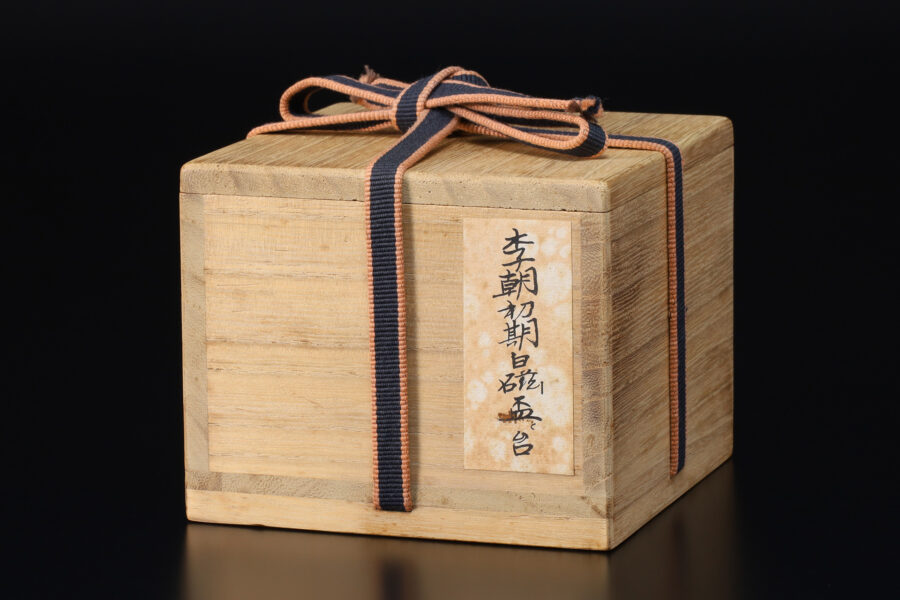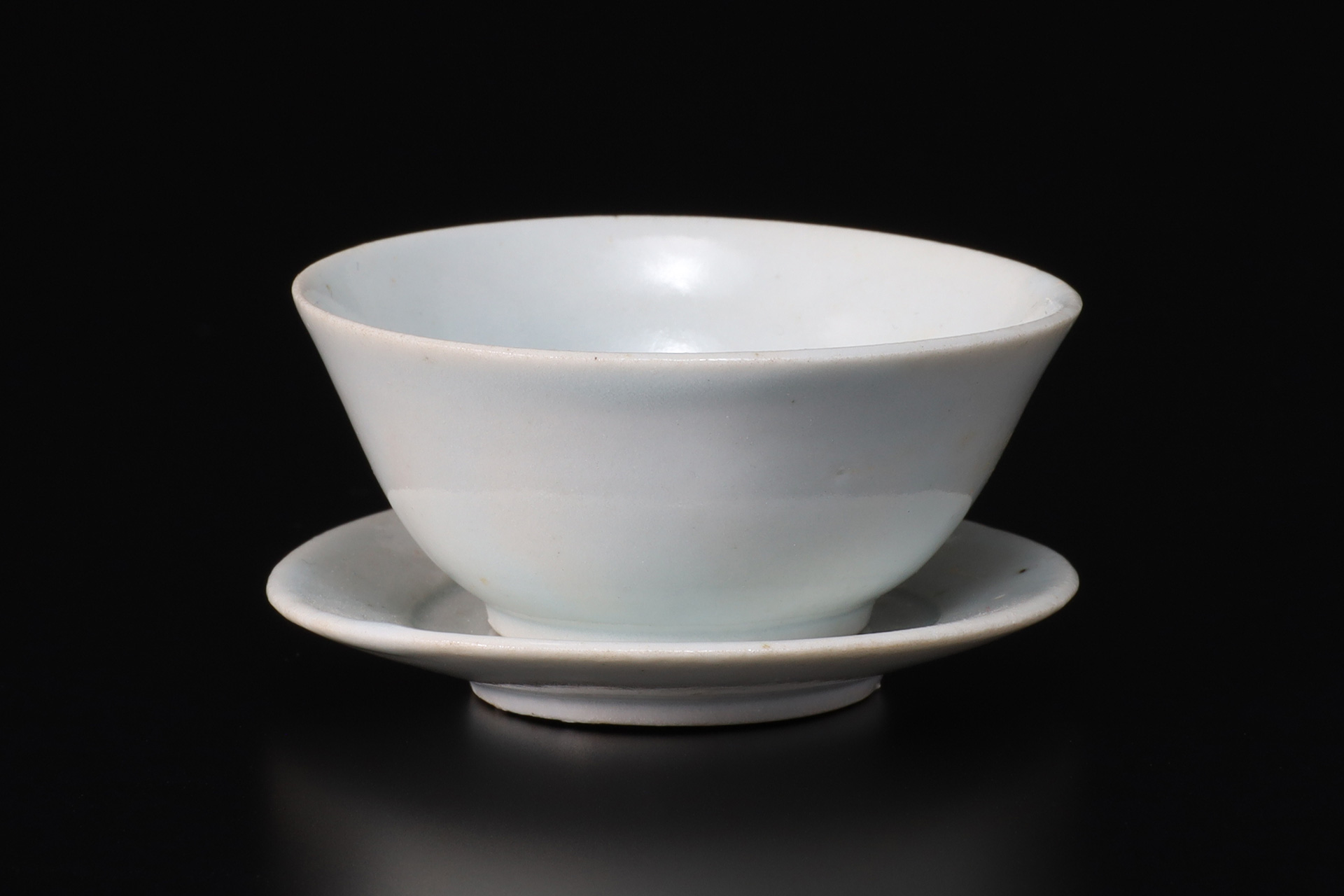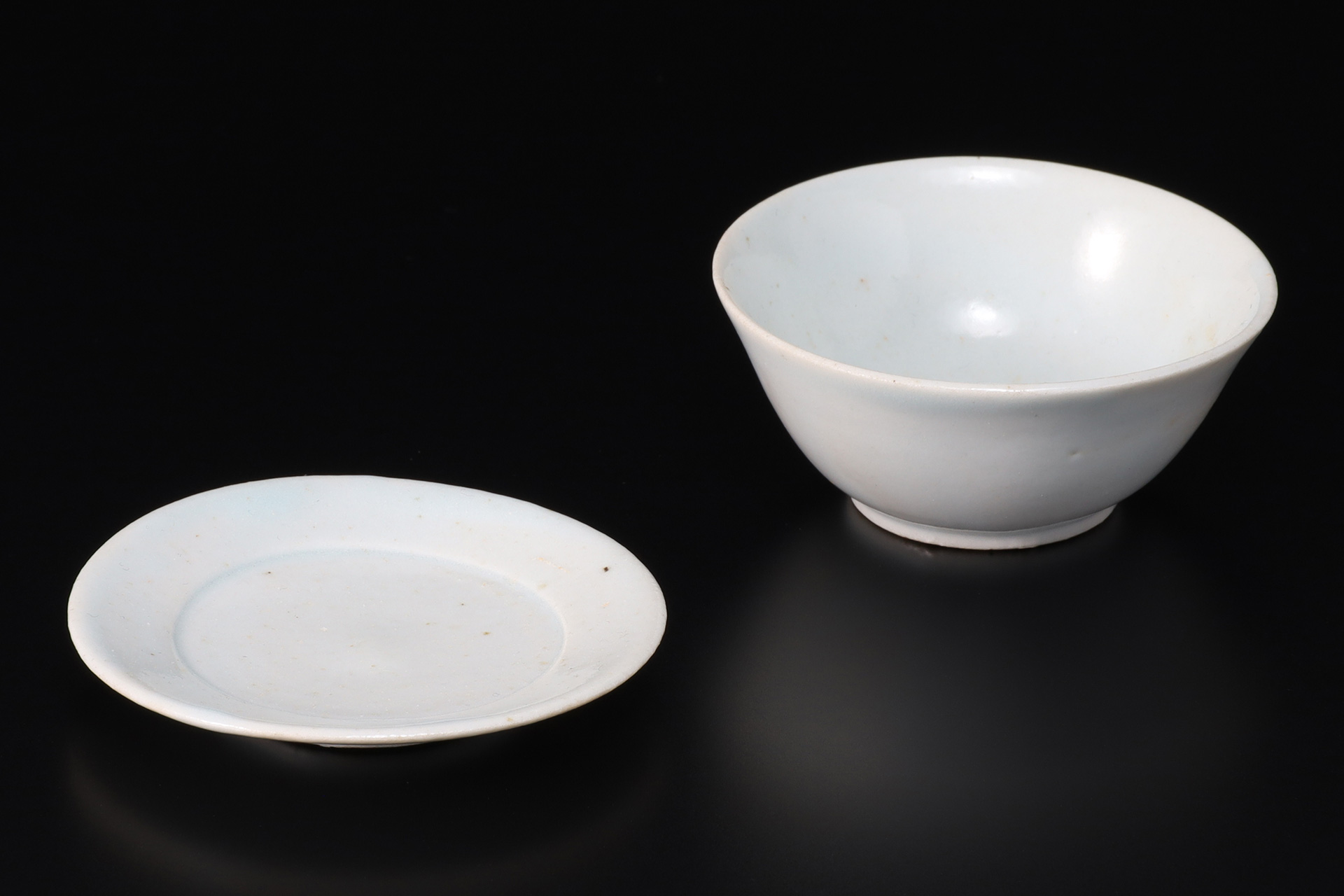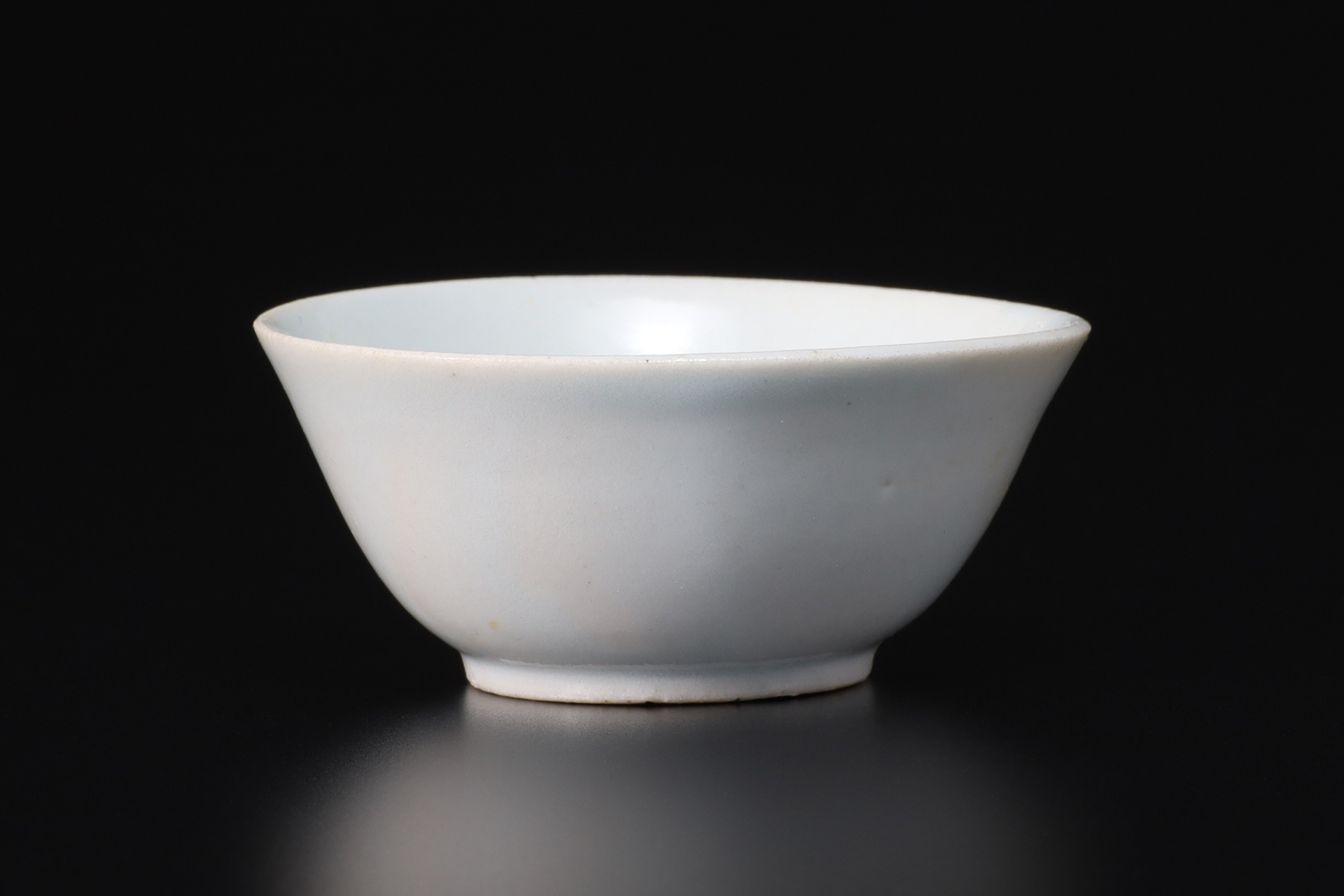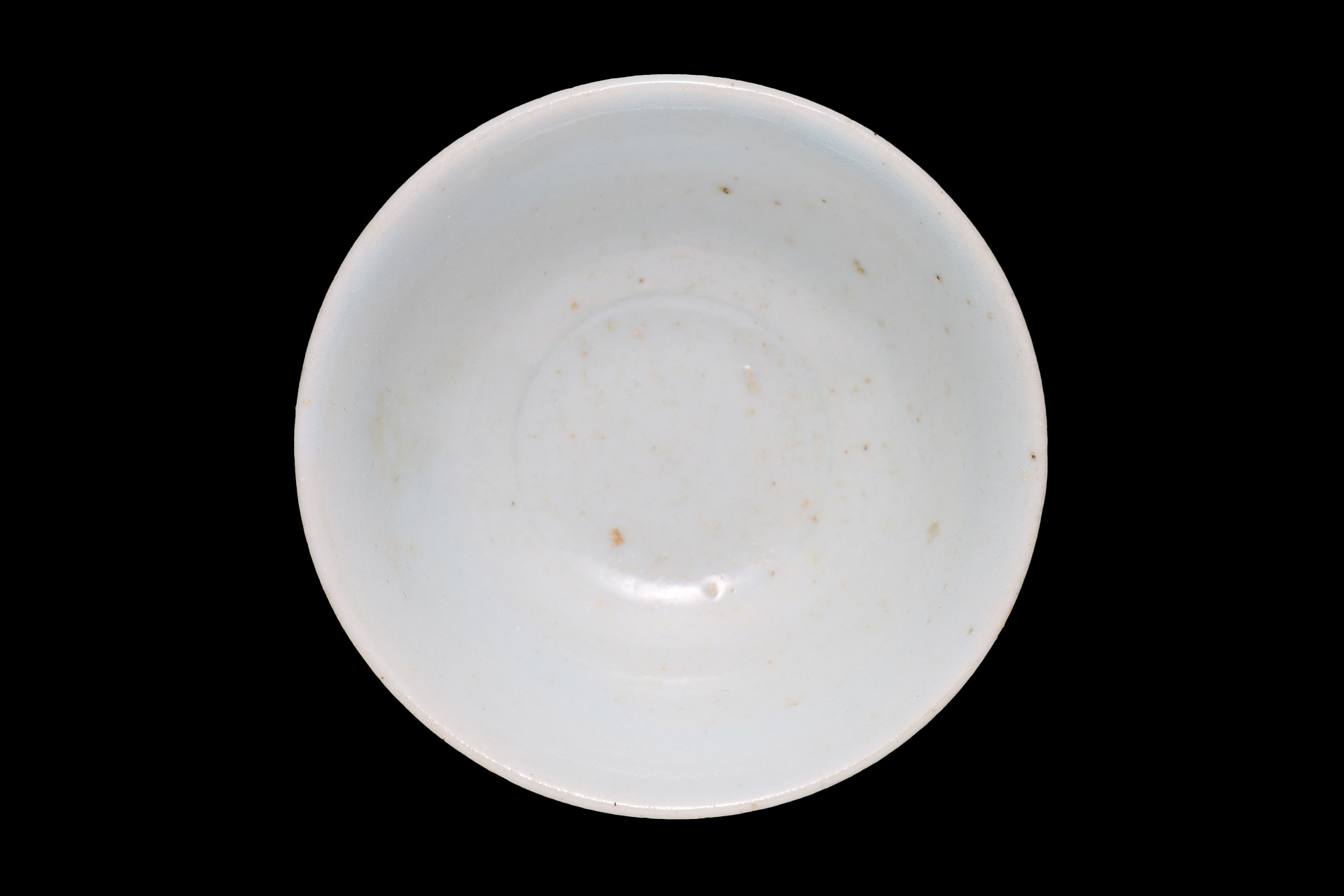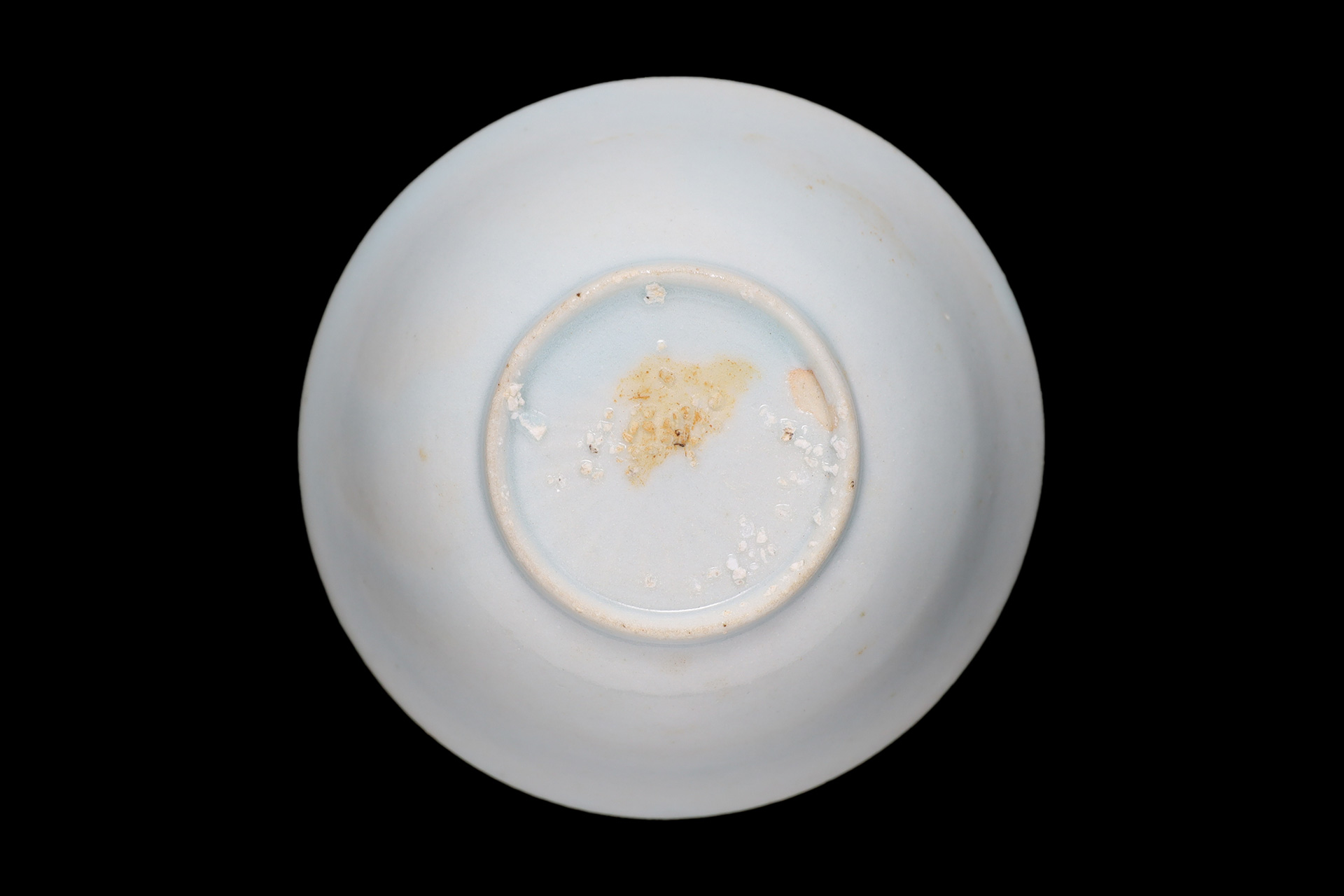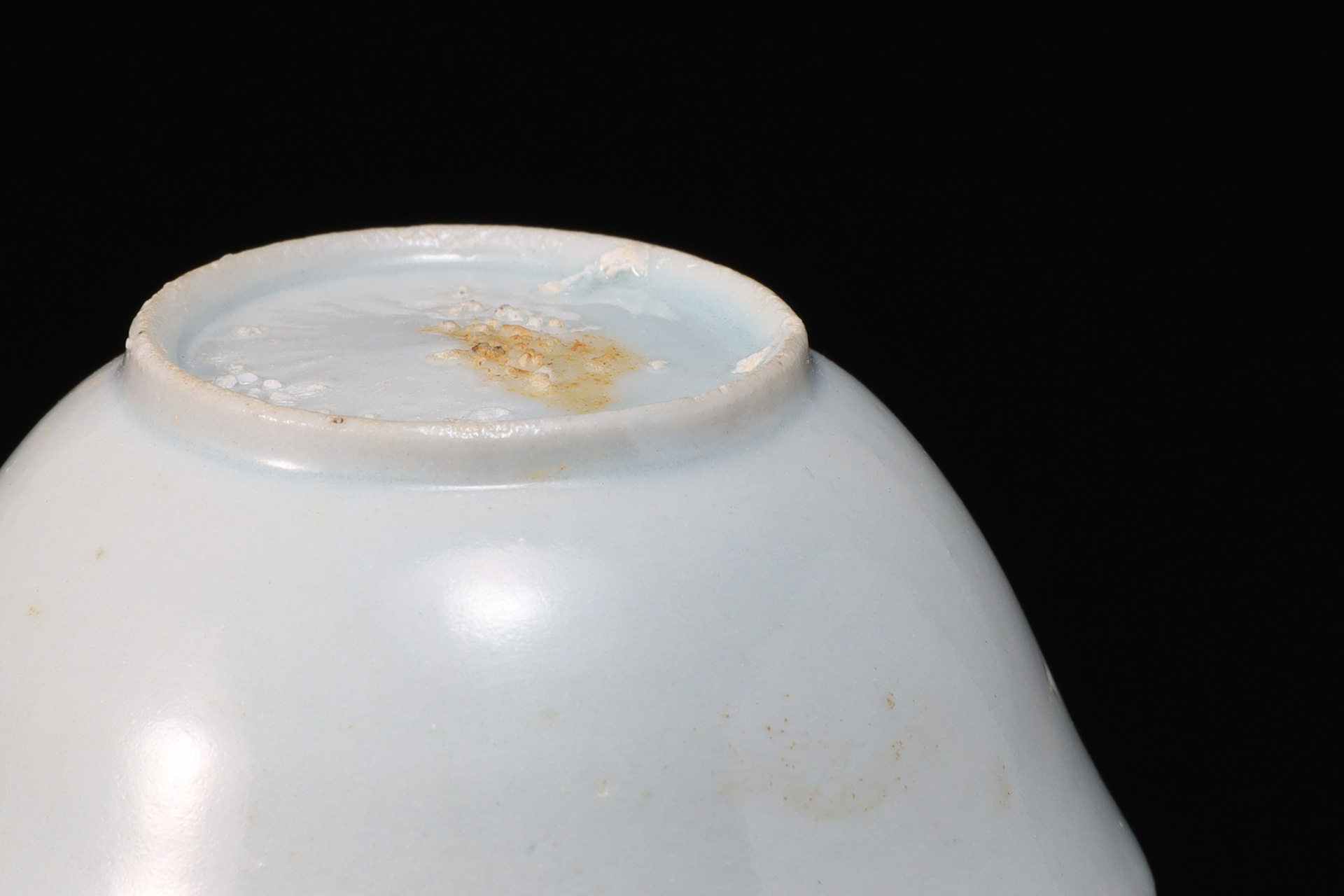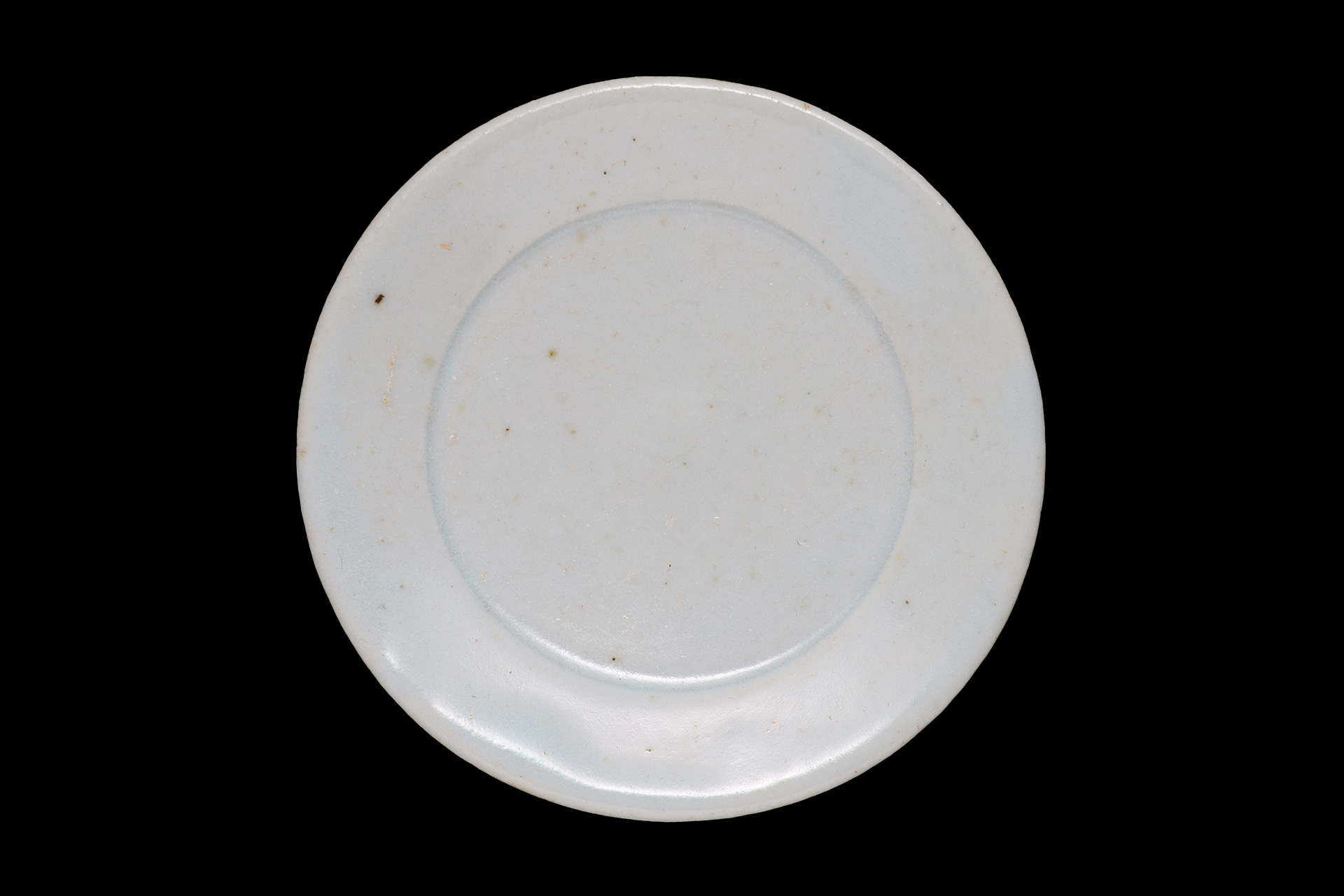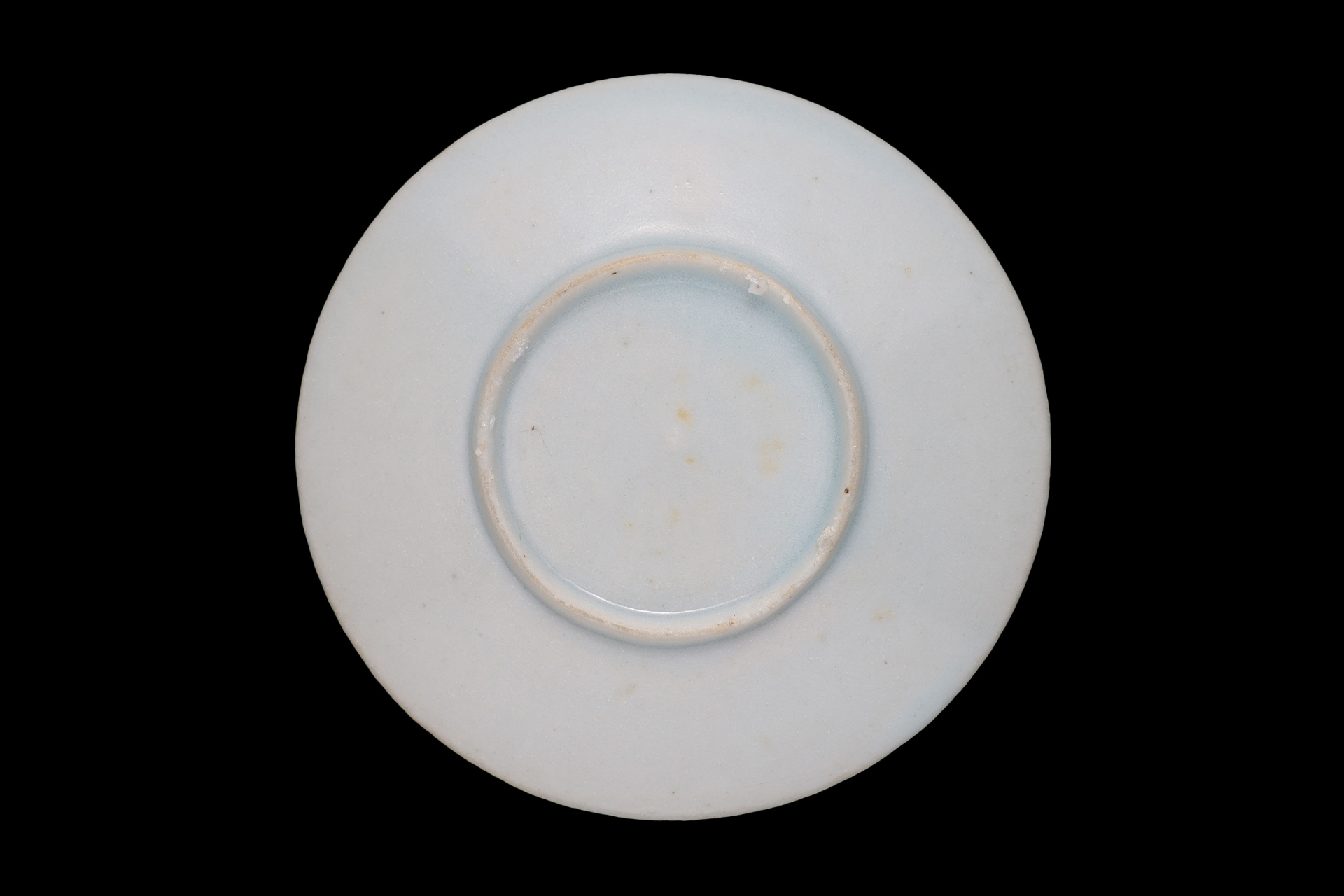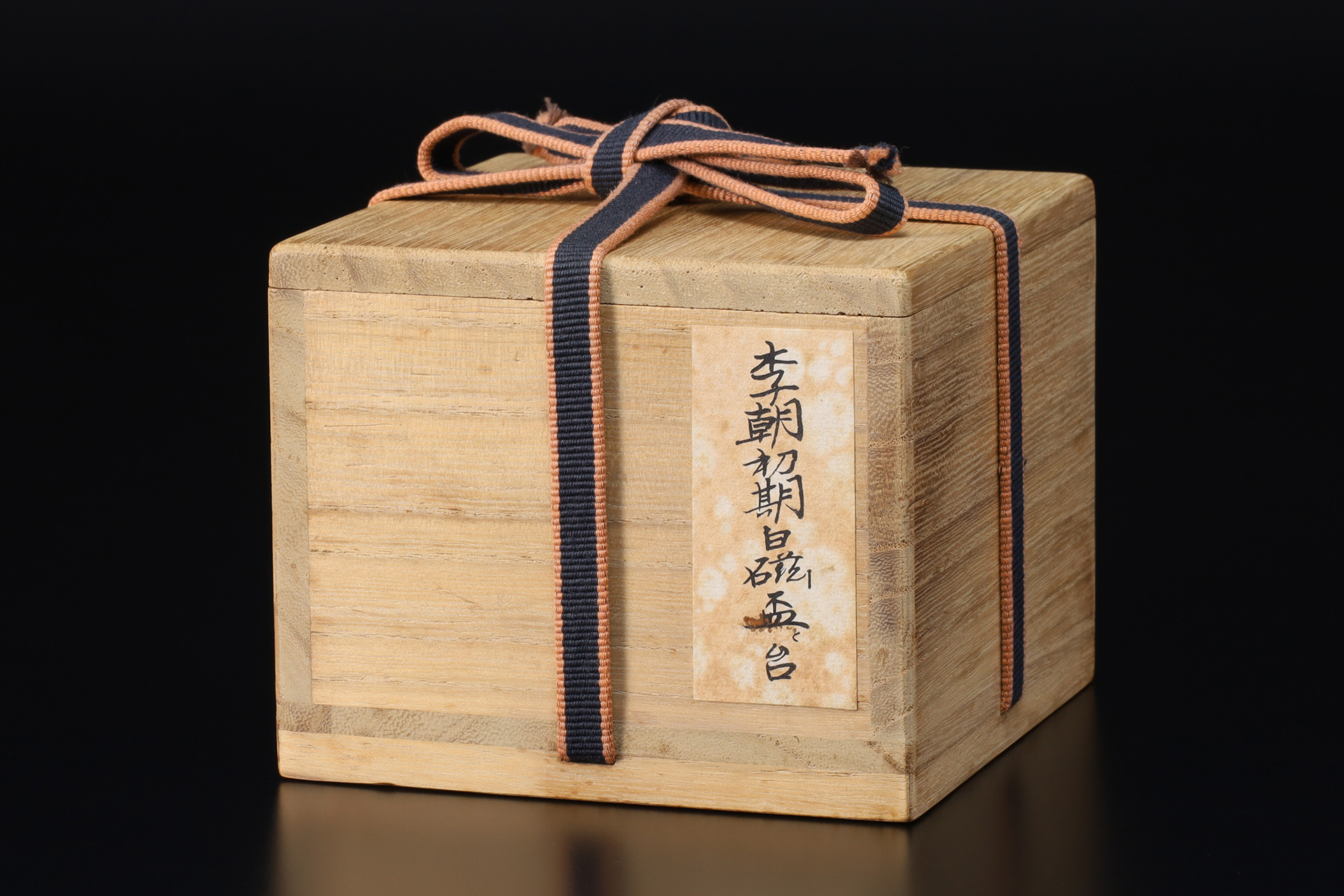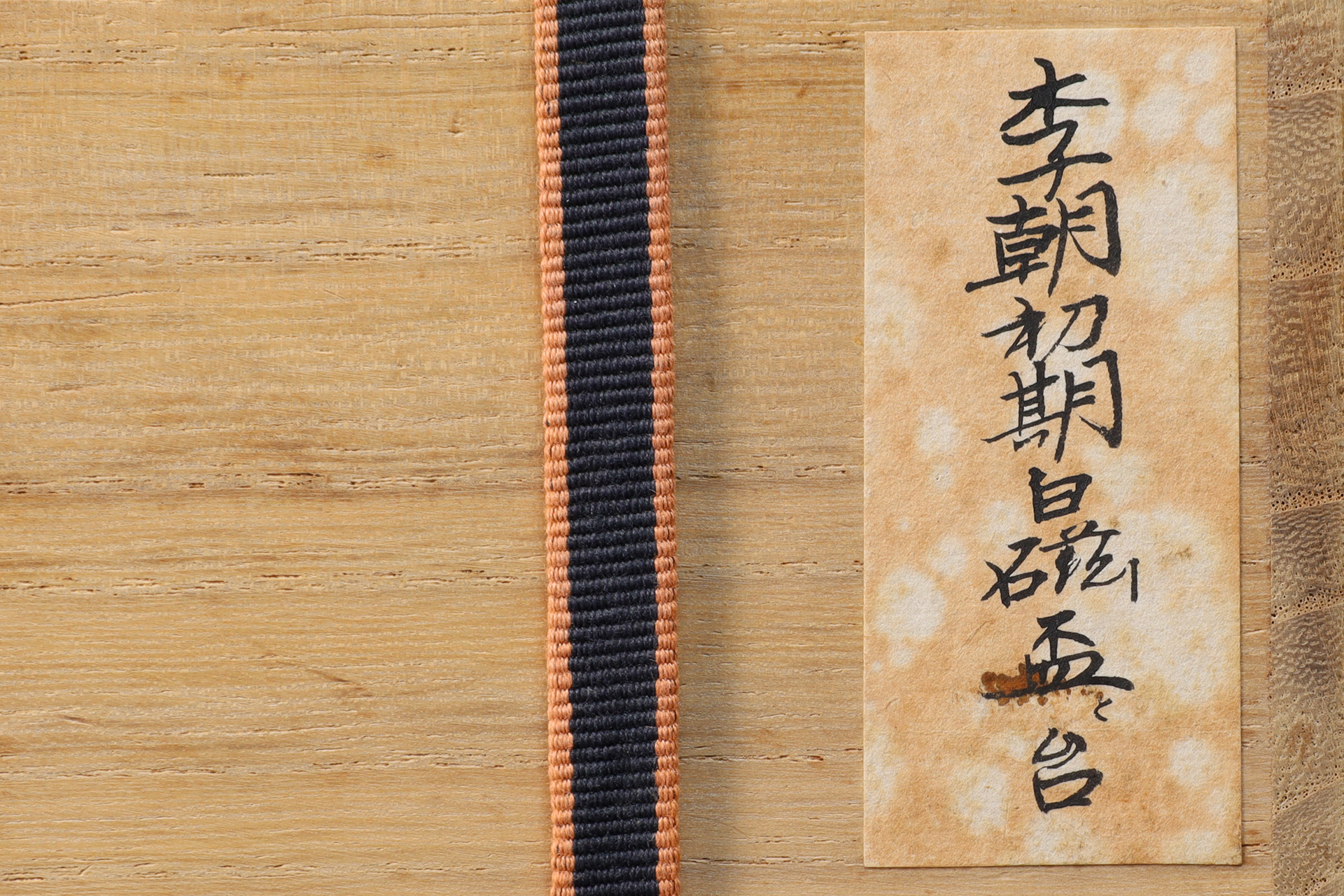It is the hard white-porcelain made from fine clay and molded thinly, displaying a neat and stable beauty of form. The pure and elegant blue-white color is of an extremely high standard, and fine sand grains can be seen on the bottom. White-porcelain, which was exclusive to the king, was deeply imbued with the spirit of confucianism, the state religion, and was required to be of high quality and to be sacred and simple.
Inquiry
- Product Code
- 231213-3
- Period
- Joseon Dynasty
15-16th century
- Weight
- 57g
- Small Cup
- Diameter:6.4cm
Height:2.7cm
Bottom Diameter:3.1cm
- Small Dish
- Diameter:6.6cm
Height:1.0cm
Bottom Diameter:3.4cm
- Description
- Paulownia Box
- Provenance
- Kochukyo
- Condition
- Excellent Condition
It has beautiful bluish-white glaze, and is in good condition.
Yi Dynasty
The joseon dynasty was the last unified dynasty of korea, founded by Yi Seong-gye in 1392 on the korean peninsula. The country’s name was adopted in 1393 after Yi Seong-gye requested recognition from the Ming King. The name “Yi Dynasty” has become established in japan and has been used for a long time. As buddhism, which had flourished during the goryeo dynasty, declined and policies to suppress buddhism and revere confucianism were promoted, the spirit of confucianism became deeply ingrained as the code of conduct for people’s lives, and the ideals were to revere purity and innocence and to cultivate a simple, frugal spirit. As confucianism spread, rituals were also held on a grand scale, from the imperial court to the general public, and white porcelain was highly valued for ritual vessels, as “White” was a pure and innocent color that symbolized holiness and simplicity. Decorations such as blue-and-white, iron-glaze, and copper-red-glaze were created based on white porcelain, but under a system that valued frugality, colored paintings were never fired until the end. In 1897, after the sino-japanese war(1894-1895), the country’s name was changed to “Daehan”. After the russo-japanese war(1904-1905), it became a japanese protectorate, and was destroyed with the annexation of korea in 1910. The brothers Noritaka Asakawa and Takumi had a deep understanding of and love for yi dynasty ceramics and demonstrated the power to make them widely known in society. It was Muneyoshi Yanagi who became interested in them under their guidance.
https://tenpyodo.com/en/dictionaries/korea/
Early Yi Dynasty 15th century-16th century
The pottery of the early yi dynasty is dominated by buncheong and white-porcelain. Buncheong is known for its various varieties such as mishima, hakeme, and kohiki, and when the decorative technique of white makeup was adopted, it underwent a major transformation to adapt to the new times. The 15th century was a period of transition to full scale white-porcelain production, and high quality white-porcelain was required to have the dignity appropriate for use as imperial ware or as a gift to china. The dedicated kiln, which plays the role of the imperial-kiln, repeatedly moves within guangzhou county in search of firewood for fuel. Several documents state that, influenced by chinese ceramics, expensive imported pigments from persia were used by court painters to paint the blue-and-white works; these are difficult to obtain due to their rarity. Eventually, domestic cobalt began to be used, but the quantities were small and only a small amount was produced. Examples of iron painting can be seen from around the 15th century, but full-scale production did not begin until the 17th century.
Yi Dynasty White-Porcelain
Yi dynasty white-porcelain, with its gentle expression and tranquil atmosphere, is the pinnacle of oriental ceramics. The rulers of the joseon dynasty had a strong interest in white-porcelain, and it became deeply rooted in the confucian spirit of respecting purity in the vessels of the royal family and government offices. As a “White-Robed People”, they love the beautiful white color that is neat and benevolent, and there is a wide variety of whites, including hard gray-white, devitrified milky-white, bluish-white, and a wide variety of whites.
